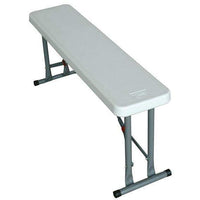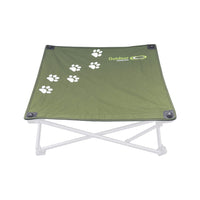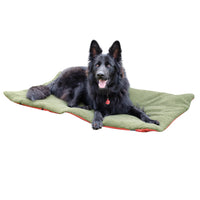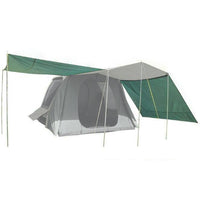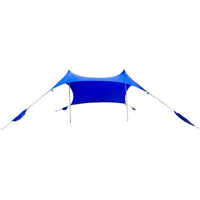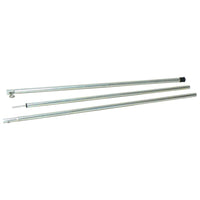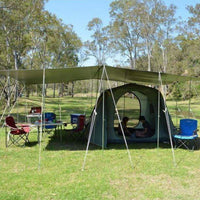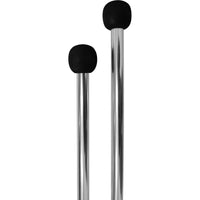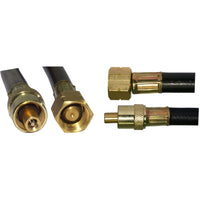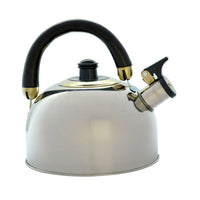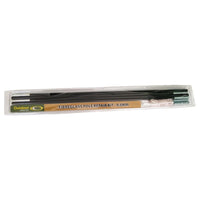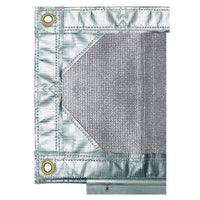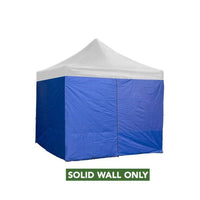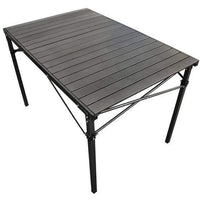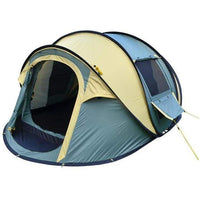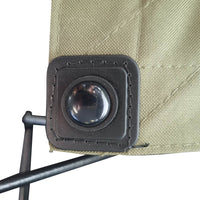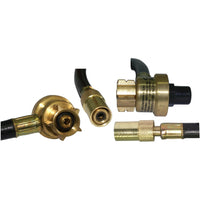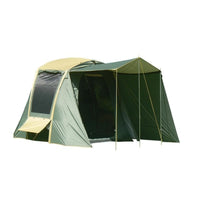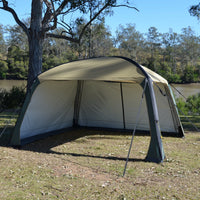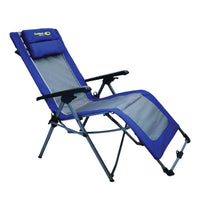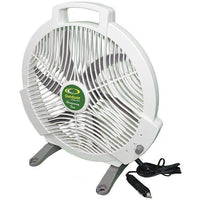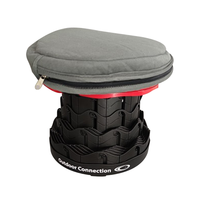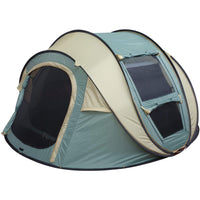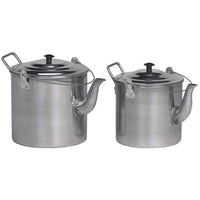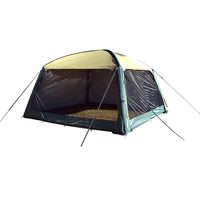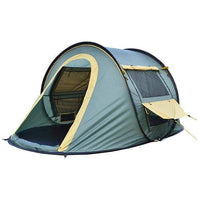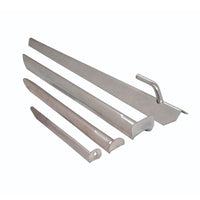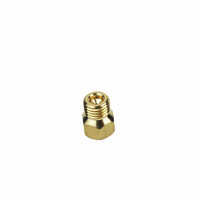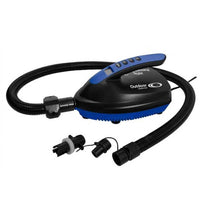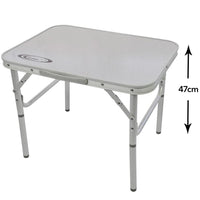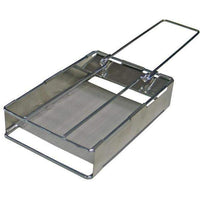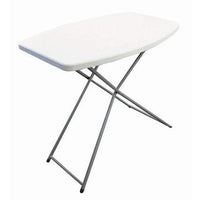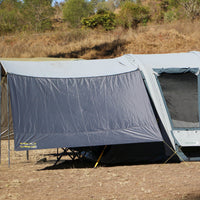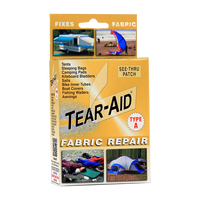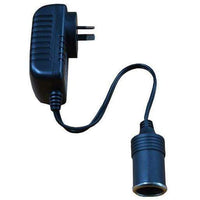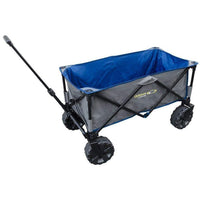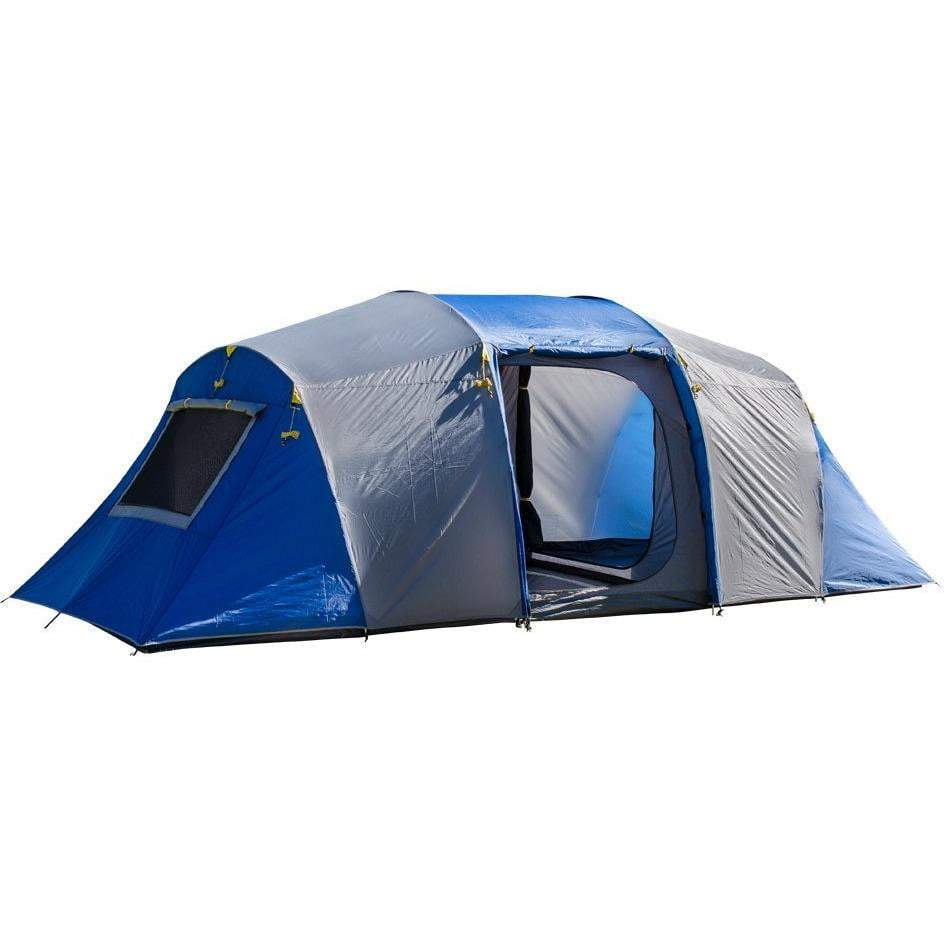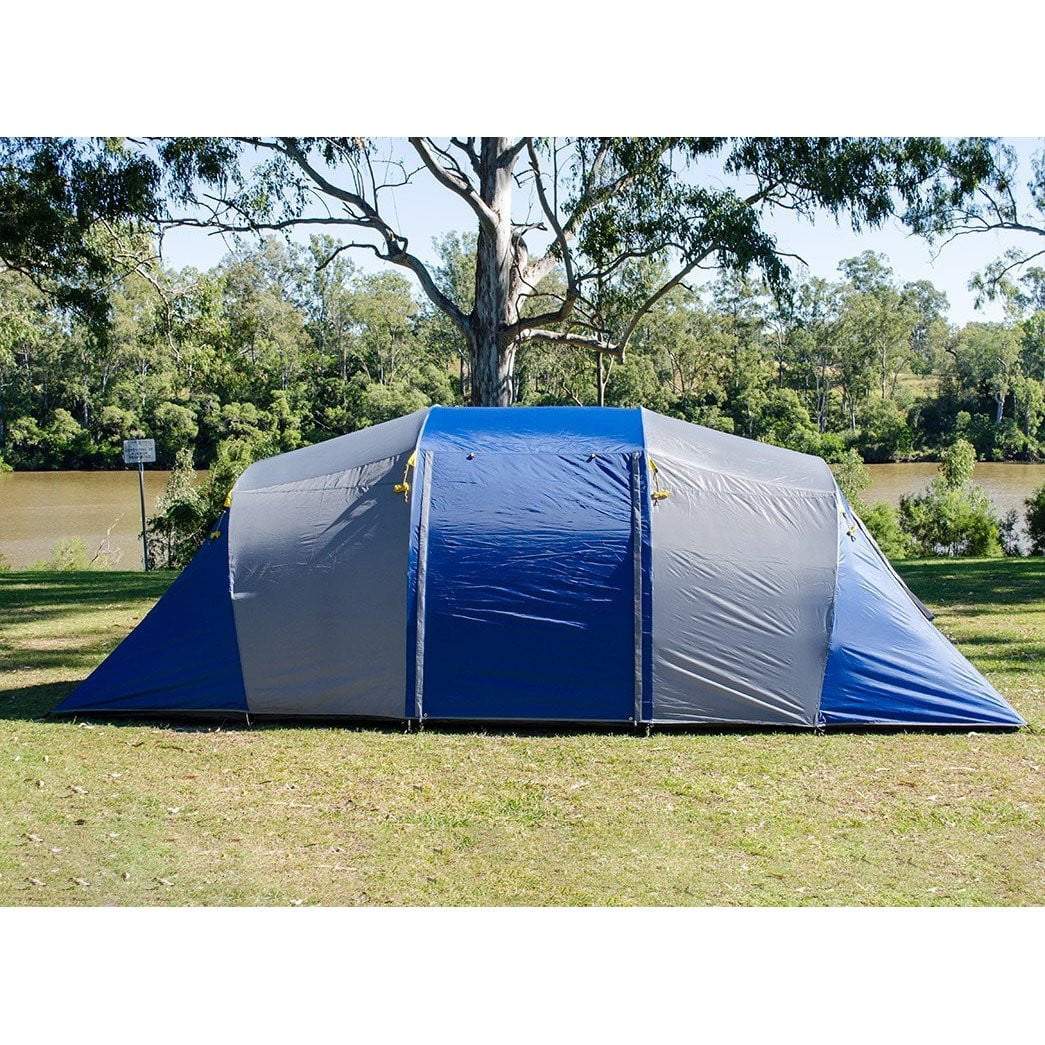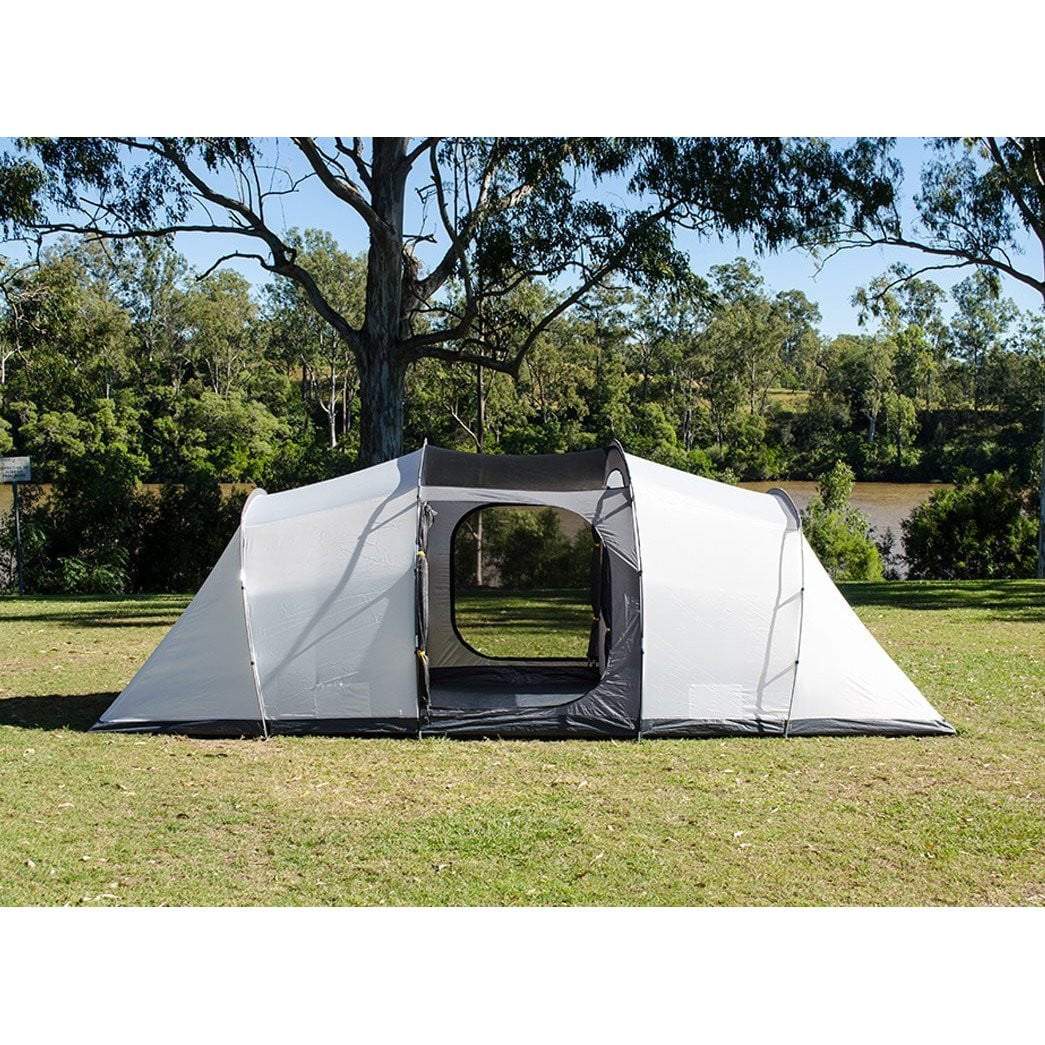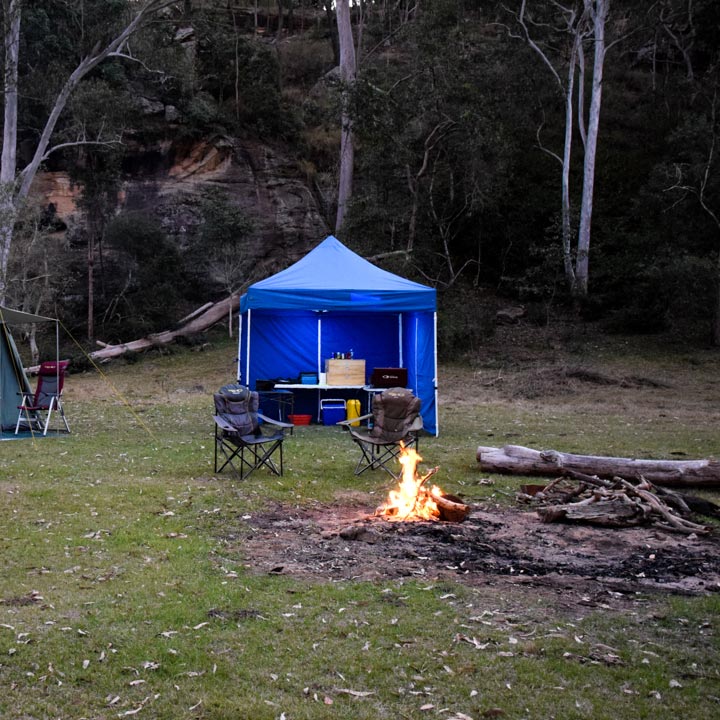Breakaway Somerset 3R Family Dome Tent
$379.95 AUD
Regular price $249.00 AUDThe Outdoor Connection Breakaway Somerset 3R is a spacious three-room comfortable family dome tent designed to provide a great value, durable, superior quality tent for the family with a limited budget. The Somerset 3R is manufactured to the same high-quality standards as all other more expensive Outdoor Connection tents. The Breakaway Somerset 3R delivers the trusted Outdoor Connection quality you know, in a more affordable design. Built to the same high manufacturing standards as our premium tents, it features a simplified specification that makes it ideal for value-conscious campers who still want performance they can rely on.
$379.95 AUD
Regular price $249.00 AUDThe Outdoor Connection Breakaway Somerset 3R is a spacious three-room comfortable family dome tent designed to provide a great value, durable, superior quality tent for the family with a limited budget. The Somerset 3R is manufactured to the same high-quality standards as all other more expensive Outdoor Connection tents. The Breakaway Somerset 3R delivers the trusted Outdoor Connection quality you know, in a more affordable design. Built to the same high manufacturing standards as our premium tents, it features a simplified specification that makes it ideal for value-conscious campers who still want performance they can rely on.
FAQS
Outdoor Connection is our premium tent and outdoor gear brand, built for regular campers who want superior materials, comprehensive features, long-lasting durability & an extended warranty for peace of mind.
Breakaway is a subsidiary brand of Outdoor Connection, developed and backed by the same team. You get trusted Australian-designed outdoor products and the same customer support.
Breakaway is our more affordable range, designed to give budget-conscious campers great Australia-designed outdoor gear. It's ideal for first-time campers, occasional family camping trips, and casual weekend use.
A waterhead rating, also known as hydrostatic head, or HH, measures how waterproof a tent’s fabric is. The number (e.g. 1500 mm) refers to how tall a column of water the fabric can support before it leaks.
It applies only to the fabric, not seams, zippers or design. The real-world waterproof performance depends on the full tent construction, not just the spec.
Rating Categories & What They Mean
- 0–1000 mm = water-resistant only; suitable for light showers, typically 2-season tents
- 1000–1500 mm = entry-level waterproof; common in lightweight 3-season hiking tents
- 1500–5000 mm = very waterproof; ideal for family or 3–4 season tents used in extended wet conditions
- 5000 mm+ = highly waterproof; built for extreme use or prolonged rain, though often heavier and stiffer fabrics
Tent Floors Need a Higher Rating
Tent floors should have a higher waterhead rating than the outer flysheet. Floors endure body pressure and ground moisture, so a typical hiking tent floor needs around 6000–10,000 mm, while many family-style tents use PVC or polyethylene floors, which perform differently and often lack separate HH ratings.
Higher Numbers Aren’t Always Better
Ultra-high HH coatings can make materials heavy, stiff and prone to delamination or weakened tear strength. A well-designed tent with moderate HH but sealed seams and smart design often outperforms one with a very high spec but poor craftsmanship.
Care & Maintenance Tips
You can't raise your fabric’s inherent HH rating, but you can improve overall waterproofing:
- Apply seam sealers to stop leaks at stitch lines
- Reapply Durable Water-Repellent (DWR) spray to help water bead off rather than soak in
- Use a groundsheet or tarp for added protection
- Store and pitch the tent properly to reduce wear on coatings and seams
Choosing the Right Rating for Your Needs
- For summer or dry-weather camping, 1000–1500 mm is usually sufficient
- For year-round or wet weather, aim for 1500–3000 mm on the fly
- For frequent or expedition-style use, a 3000–5000 mm fly and a 6000–10 000 mm floor rating is more reliable
Quick Summary:
- 0–1000 mm = water-resistant
- 1000–1500 mm = waterproof
- 1500–5000 mm = very waterproof
- 5000 mm+ = extreme waterproof
- Floor rating ideally 2× fly rating for robust protection
Ventraflow panels at the bottom of both sides of the tent allow a cross flow of air down low where you sleep. Australian summer nights can be hot and humid, so fresh air where you are sleeping is essential. There isn’t much point in having the limited fresh air drifting in through windows that are too high to be of direct benefit. Ventraflow panels have internal privacy screens so you can adjust the air flow without having to go outside and adjust the external window covers.
Ventraflow external covers can be pegged out, allowing for fresh air even during rain. These external covers are gusseted, providing extra rain protection while also protecting the tent from overstress as the covers are pegged out. Ventraflow, in conjunction with large windows and doors, provides unparalleled ventilation for your comfort.

On Outdoor Connection Tents, doors and windows are made as large as possible to ensure maximum ventilation and feature no-see-um mesh (a very fine mesh) to keep the smallest of bugs out. The quality of this mesh is therefore critical, as this mesh constitutes a ‘weak point’ in any tent.
What does Durafine do?
‘Dura’ as in Durable – the thread of the mesh must be strong. The large areas of windows and doors would be particularly vulnerable to damage if the thread is not strong. The mesh thread must also remain strong through time. The UV light causes the breakdown of any fabric over time. This particularly applies to mesh thread. Additives must be added in the manufacturing process to improve the resistance to UV degradation. Again, this costs ‘real’ money, so it is often neglected by many manufacturers because it is not a visible characteristic of the tent.
‘Fine’ refers to both the fineness of the mesh thread and the density (count) of the thread in the mesh. The best mesh will have densely packed, very fine threads so that midges, sandflies, and "no-see-ums" cannot get through the mesh.
UPF 50+ is the highest certified rating for fabric sun protection. On Outdoor Connection tents, this rating indicates that the tent fabric blocks at least 98 per cent of harmful UV radiation, helping to protect your family from sunburn and long-term skin damage.
What does UPF stand for?
UPF stands for Ultraviolet Protection Factor. It's a fabric-specific rating that measures the amount of UV radiation that can penetrate the material.
What does UPF 50+ mean in numbers?
UPF 50+ means only 1/50th (less than 2 percent) of UV rays can pass through the fabric. It provides excellent protection against both UVA (ageing) and UVB (burning) rays.
Is this the same as SPF?
No. SPF applies to sunscreen. UPF applies to fabrics like those used in tents, gazebos, and shade structures.
Is UPF 50+ standardised?
Yes. Outdoor Connection tents are tested to AS/NZS 4399:2017, the Australian and New Zealand standard for sun-protective textiles.

Understanding the key components of a tent helps you choose the right model and use it properly. Here’s a breakdown of the essential elements:
Fly (Flysheet)
The outer waterproof layer that protects the tent from rain, wind and UV. Some tents have full-coverage flies, while others have partial flies for ventilation.
Inner Tent (Tent Body or Shell)
The breathable fabric layer beneath the fly. It provides insect protection and holds the structure. Often made from mesh or lightweight polyester.
Tent Floor (Footprint/Base)
The built-in ground layer of the tent. Made from heavy-duty waterproof fabric to protect from ground moisture and abrasion. A separate groundsheet or footprint can add extra protection.
Poles / Air Poles
The frame structure that gives the tent its shape. Materials include aluminium, fibreglass or inflatable air poles (in air tents). Designs vary by tent type.
Pegs (Stakes)
Anchors used to secure the tent and guy lines to the ground. Different terrains may need specific peg types.
Guy Lines
Tensioned cords attached to the fly and staked out to stabilise the tent in wind. Proper setup is crucial for structural integrity.
Awning or Vestibule
A covered area outside the inner tent. Used for gear storage or shaded space. Can be built-in or added separately.
Doors and Windows
Entry points and ventilation openings. Quality tents use mesh and zips to control airflow and insects.
Ventilation Panels
Mesh or flap-covered vents built into the fly or body to reduce condensation inside the tent.
Seams
Stitch lines where fabric panels join. Sealed seams help prevent leaks and are a key factor in waterproofing.
Got questions? Ask a real camper over the phone!
Outdoor Connection is an Australian-owned & operated company selling quality tents, camping and outdoor equipment used and designed by our design and support team. Outdoor Connection tents are designed for Australian camping conditions and manufactured to the highest quality in order to withstand the ‘tuff stuff.’

